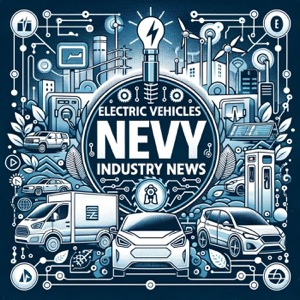EV Boom Continues: Navigating Supply Chains, Partnerships, and Consumer Trends in the Electrified Future
Electric Vehicles Industry News - En podcast av Quiet. Please

The electric vehicle (EV) industry is currently experiencing significant momentum, marked by robust sales growth, key partnerships, and evolving market dynamics. In the United States, General Motors reported an impressive 94% year-over-year increase in EV sales for the first quarter of 2025, driven by models like the Chevrolet Equinox EV and Blazer EV. Ford also achieved notable progress, with a 12% rise in battery electric vehicle (BEV) sales and a 33% surge in hybrid sales, reflecting increased consumer demand for electrified options. Meanwhile, Tesla's dominance appears to be declining, as emerging competitors like Rivian and Lucid Motors capture more market share with targeted strategy shifts and new model launches[1][8].Globally, automakers are navigating challenges in supply chains, battery procurement, and regulatory adjustments. Hyundai, for instance, has expanded accessibility to Tesla's Supercharger network by introducing complimentary North American Charging Standard (NACS) adapters, further reducing range anxiety among customers. Additionally, Hyundai’s IONIQ 6 was recognized as the 2025 Best Value EV, emphasizing affordability and innovative features like a 342-mile all-electric range, making it one of the most accessible EVs in its segment[4]. Partnerships and joint ventures are serving as critical strategies for overcoming supply chain challenges and securing essential materials. U.S. automakers have aggressively pursued collaborations to bolster domestic battery production, aligning with the Inflation Reduction Act’s requirement for locally sourced battery minerals. This has included investments in recycling companies like Redwood Materials, aimed at establishing a closed-loop supply chain for EV batteries. Similarly, companies like Tesla and Volkswagen have sustained their leadership through long-standing battery partnerships, which are critical for maintaining production scalability[2][9].In Europe, policy shifts are impacting growth. Recent adjustments to CO2 emission reduction requirements have given automakers more time to comply with stricter mandates, raising concerns that regulatory leniency could stall momentum in EV adoption. However, EV sales in the region grew by 28% in the first two months of 2025, reinforcing the effectiveness of emissions targets in driving consumer demand when strictly enforced[7].Supply chain developments, including expansions in public charging infrastructure, are encouraging broader adoption. In the U.S., the rapid rollout of charging stations has doubled network capacity since 2020, reflecting intensified public and private investments. However, federal freezes on certain EV-support funding programs under the current administration could hinder long-term progress[8].Consumer behavior is also evolving. While upfront EV costs remain a barrier, zero-percent financing offers across various models have eased affordability concerns, driving higher adoption rates. Key models, including the Chevrolet Equinox EV and Volkswagen ID.4, are benefiting from these promotions. Additionally, subscription-based EV ownership models like Hyundai’s "Evolve+" are providing consumers with flexibility and lowering barriers to entry[4][5]. Overall, the EV industry remains poised for continued growth, with global projections estimating the EV market to exceed $200 billion by 2034. Despite ongoing obstacles like energy costs and battery resource constraints, innovation in technology and infrastructure, combined with regulatory support, ensures sustained momentum in the shift toward electrified transportation[8][10].
